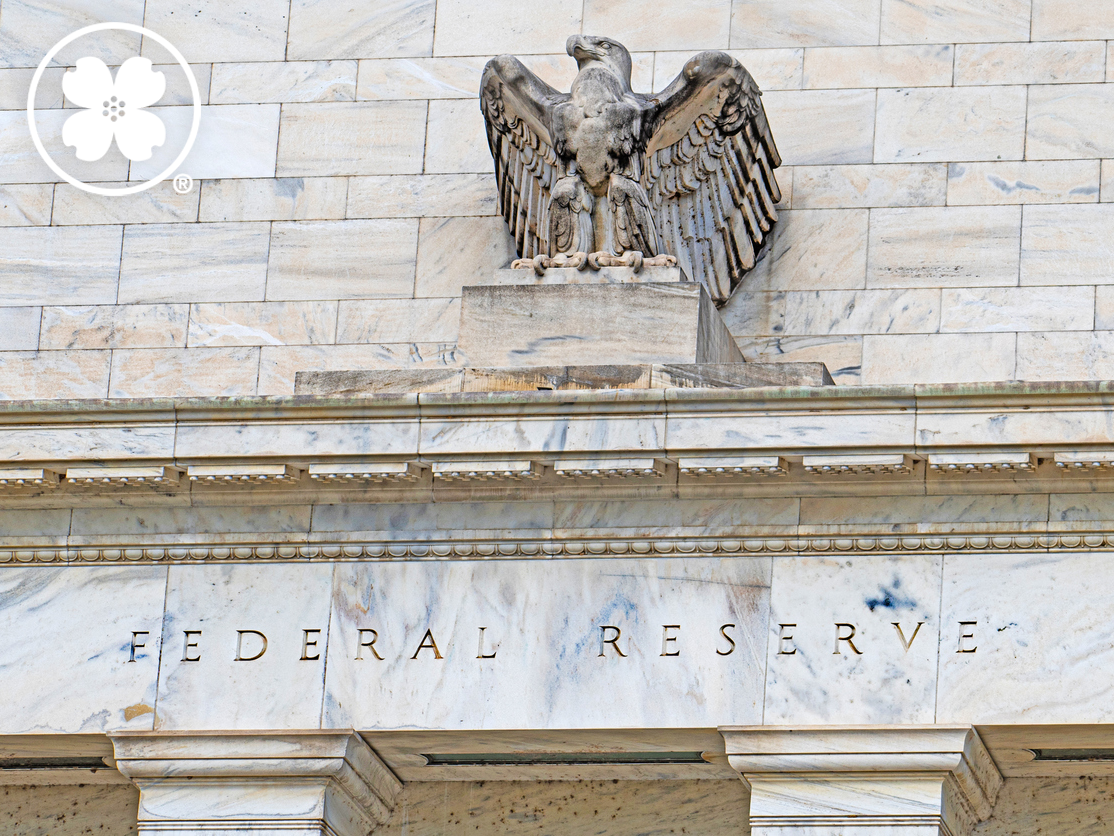Broad investment gains across stocks, bonds, and precious metals reflected market strength in September, driven by AI growth, interest rate cuts, and resilient global performance.

Along with tricks and treats, October is also associated with falling leaves and falling stocks. This year the S&P 500 index provided investors with treats by rising 2.34% for the month. Once again, the large-cap index was led by mega-cap technology stocks. Positive earnings to close out the month, combined with expectations of a rate cut from the Federal Reserve (Fed), overshadowed signs of economic weakness, a government shutdown, and a surprisingly hawkish tone from Fed Chair Jerome Powell.
Technology and AI Continue to Drive Market Leadership
The Information Technology and Communications sectors continue to dominate returns in the S&P 500, up 29.93% and 26.82% year to date (YTD), respectively. The Utilities sector ranked third, up 20.17% YTD, driven largely by the energy demands of artificial intelligence (AI). Discussion of a potential AI bubble has grown louder as valuations continue to climb.
We have often noted the parallels and key differences between the dot-com bubble and today’s AI-driven market. One major distinction is that today’s publicly traded tech companies generate substantial revenues and profits, unlike many of the “darlings” of the dot-com era. Still, there is a price for everything, and as valuations rise, so do investor concerns.
Big Tech Alliances and the Cost of AI Expansion
Previously, we pointed out the circular nature of deals within the AI space. Not long ago, we observed that the greatest threat to major tech firms was one another. These companies have long competed across areas such as smartphones, cloud storage, search engines, and web browsers. Now, AI has become the most expensive and competitive frontier—and unlike any prior technology, every major player is vying for dominance. Perhaps they read our note, because we’ve since seen partnerships and alliances form among former rivals.
This cooperation stems from necessity. The cost of building and maintaining AI infrastructure is staggering, and even the enormous cash flows of these firms are insufficient to sustain the current pace of investment. To share costs, many have formed partnerships and tapped debt markets to finance continued expansion. While this spending spree has alarmed some investors, AI holds transformative promise—perhaps rivaling the internet, railroads, or the steam engine. No tech CEO wants to risk missing out, even if it means forming once-unthinkable alliances.
Mid- and Small-Cap Stocks Face Headwinds
Mid- and small-cap companies did not fare as well as their larger peers in October. The S&P MidCap 400 and SmallCap 600 declined 0.47% and 0.88%, respectively, for the month.
Tariff pressures, inflation, labor uncertainty, and the Fed’s hawkish tone weighed on returns. Valuations in these markets remain more attractive than in the S&P 500, but without greater clarity on these challenges, achieving consistent positive returns will remain difficult.
Global Markets Continue to Outperform
Foreign markets extended their positive momentum for the year. Both the S&P Developed Markets ex-U.S. Broad Market Index (BMI) and the S&P Emerging Markets BMI delivered gains of 2.35% and 3.16%, respectively, for the month. These markets continue to outperform the S&P 500 YTD, up 29.92% and 25.49% as of month-end.
A declining U.S. dollar contributed to the strength, but broader structural shifts also played a role. Changing geopolitical dynamics and evolving U.S. trade and security policies have prompted companies and governments worldwide to increase spending in order to protect domestic industries, address vulnerabilities, and enhance national security.
Bond Markets and the Fed’s Balancing Act
The S&P U.S. Aggregate Bond Index gained 0.66% for the month as bonds head toward their best annual performance since 2020. The Fed’s second rate cut of the year came as expected in October, but Chair Powell worked to temper market expectations for another cut at the final meeting of the year in December. Given the divided views among voting members and limited data due to the government shutdown, another rate cut is far from assured.
Nevertheless, data suggests the economy is beginning to weaken despite the stock market’s strength. The labor market appears to be softening, small business and manufacturing sentiment remain in contraction territory, and uncertainty in trade and tariff policy has restrained business activity.
Meanwhile, immigration reform challenges have disrupted several industries. Credit delinquencies and balances are rising, and commercial real estate continues to struggle amid remote work and office vacancies. With inflation still above the 2% target, additional rate cuts could push long-term rates higher, putting further pressure on the already fragile housing market.
Rates, the Supreme Court, and Tariff Implications
So far, we’ve seen a modest replay of last year, when each rate cut was followed by a rise in longer-term rates. The magnitude of those moves has been smaller this year, and overall, interest rates have trended downward since 2024.
However, the Supreme Court’s upcoming ruling on the International Emergency Economic Powers Act (IEEPA) could unsettle bond markets and interest rates if lower-court decisions are upheld. Regardless of the outcome, tariffs in some form are likely to persist. The key question is whether alternative revenue measures can generate as much income for the government.
Precious Metals Signal a Changing Global Order
Precious metals also posted strong gains, with the S&P GSCI Precious Metals Index up 3.53% for the month. Despite solid performance, there was a mid-month pullback as investors got ahead of themselves. Still, the index’s 51.03% YTD return—following two consecutive years of 20%+ gains—is remarkable. With gold now the second-largest global reserve asset, behind only U.S. Treasuries, this may signal that the global financial order is shifting.
Markets continue to perform well despite considerable uncertainty and elevated valuations. The question remains: Is it all a trick—or will it continue to be a treat?
Investment Commentary by Jason Flores, CFA, CAIA – Executive Vice President & Chief Investment Officer at Central Trust Company.
At Central Trust Company, we continue to reassess the rapidly changing investment landscape for both risks and opportunities. If you would like to access our full monthly outlook and additional investment commentary, visit our Investments Learning Center. As always, if you have questions or concerns, please contact your Central Trust Company team. We are always ready to help.


